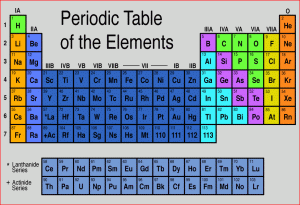 Dr. Vladimir I. Vysotskii is a Nuclear Physicist and Head of Theoretical Radiophysics Department at Kiev National Shevchenko University, Ukraine. He received a Ph.D. in Theoretical Physics from Kiev Institute of Theoretical physics, and a second Doctorate in Theoretical and Solid State Physics. His areas of research and applications is wide, from lasers to bio-physics.
Dr. Vladimir I. Vysotskii is a Nuclear Physicist and Head of Theoretical Radiophysics Department at Kiev National Shevchenko University, Ukraine. He received a Ph.D. in Theoretical Physics from Kiev Institute of Theoretical physics, and a second Doctorate in Theoretical and Solid State Physics. His areas of research and applications is wide, from lasers to bio-physics.
Dr. Vysotskii’s first theoretical article in the field of cold fusion “Reactions of controlled fusion in crystal targets” was published in 1981 in the Soviet journal of Technical Physics, that is 8 years before the appearance of the term “cold fusion” giving him more than 35 years experience in this area. He participated and made presentations at the first LENR conference in 1990 in Provo at Brigham-Young University and he has subsequently participated in almost all ICCF conferences.
Dr. Vysotskii’s work in LENR is both theoretical and experimental, reporting stunning results of transmutations within living systems in a LENR environment. He is the author of many scientific books including, with Dr. Alla Kornilova, Nuclear Transmutation of Stable and Radioactive Isotopes in Biological Systems.
Listen to episode 11 with Vladimir Vysotskii and host Ruby Carat at our podcast page https://coldfusionnow.org/cfnpodcast/ or subscribe in iTunes.
Here is a transcript of our conversation with Dr. Vladimir Vysotskii: Click here for transcript.
 Patreon supports creators like us, and we need you to join in. Go to our homepage on Patreon https://www.patreon.com/coldfusionnow and pledge your support. Just a few dollars brings the voices of breakthrough energy research to world attention.
Patreon supports creators like us, and we need you to join in. Go to our homepage on Patreon https://www.patreon.com/coldfusionnow and pledge your support. Just a few dollars brings the voices of breakthrough energy research to world attention.
спасибо! 谢谢! Merci! Thank you! for spending your valuable time to listen to the true stories of cold fusion/LENR from the mouths of those of who live life at the frontiers of science. Become a Patron!



